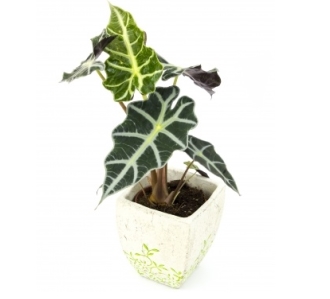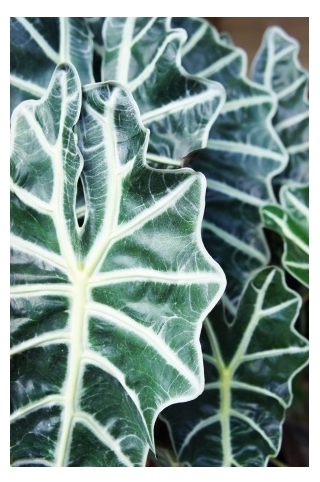






The elephant's ear is a hybrid that has become a fairly popular ornamental house plant, and is one of the easiest to find and buy from the Alocasia genus. Different shades of green and yellow appear through the leaves when sun light hits the leaves which is an attractive sight.
This plant takes root from rhizomes that allows them to be easily propagated. Outdoors in a northern environment this species will not survive the winter, although it may if it's taken indoors before the end of summer.
Indoors - if the right temperatures and other conditions are given a grower can enjoy the unique foliage of this plant for a fair few years. The plant can become dormant but it will come back, if your patient.
Flowering: These have been known to flower (quite rare), although I have never seen one bloom. If one does flower it produces a green spathe and white spadix.
Ease of growing: This plant is not that easy to care for. This is because it needs much of it's natural habitat to be imitated (it was hybridized but its parent plants would have grown in a tropical climate). During the summer caring seems to be much easier than in the winter.
The main needs is enough light, warm enough temperatures and above average humidity levels. Grown in a controlled greenhouse environment is best, but who the heck is going to see it then?
Dark Shiny Leaves and White Veins

Copyright © www.100flowers.win Botanic Garden All Rights Reserved